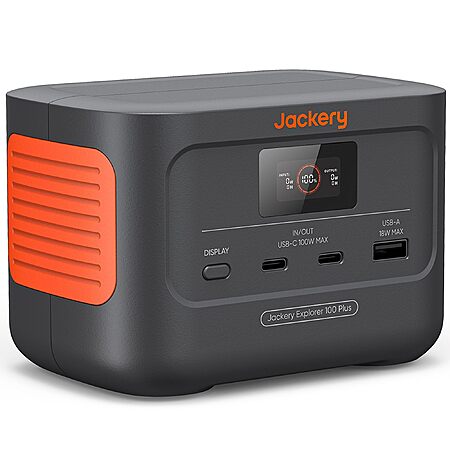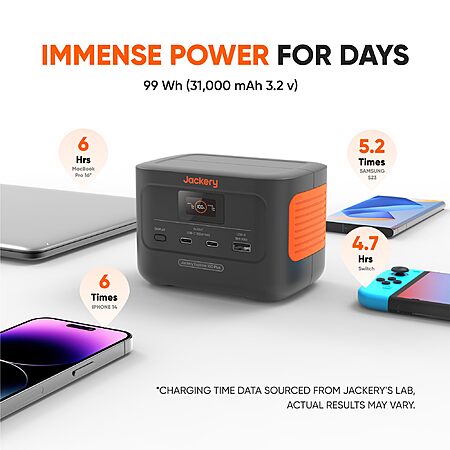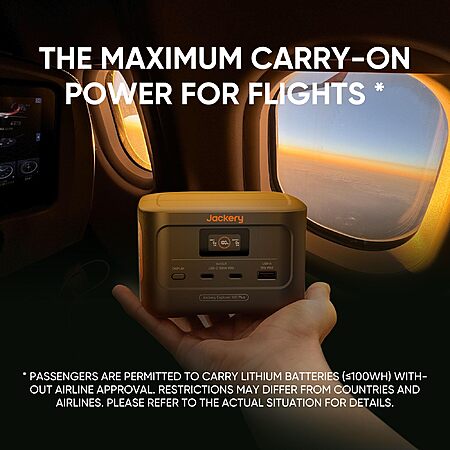For LiFePO4 battery, you can fully drain the battery without any worry of damaging it. While for Lithium ion, you may have to leave as much as 20% charge (exact number depending on the particular battery) in the battery at any time to avoid long term damage to the battery.
Lithium-ion are notorious for their temperature behavior as they get overheated very commonly. There have been instances of lithium manganese oxide batteries exploding in laptops. Thermal runaway is common in these batteries.
LiFePO4 batteries are 100% incombustible, so there is no chance of it catching fire or exploding. There is no overheat in these batteries regardless of how you charge them. Additionally, there is zero thermal runaway.
Lithium-ion batteries usually provide a cycle life between 300 to 500 cycles. LiFePO4 batteries have a substantial cycle life of about 3000 cycles.
Many Li-ion batteries can go through around 500 charge and discharge cycles before degrading in performance. LiFePO4 batteries can go through thousands of cycles before their performance begins to drop.
==================
This post can be edited by most users to provide up-to-date information about developments of this thread based on user responses, and user findings. Feel free to add, change or remove information shown here as it becomes available. This includes new coupons, rebates, ideas, thread summary, and similar items.
Once a Thread Wiki is added to a thread, "Create Wiki" button will disappear. If you would like to learn more about Thread Wiki feature, click here.
expiredMinhTrinh posted Jul 03, 2024 03:35 PM
Item 1 of 3
Item 1 of 3
expiredMinhTrinh posted Jul 03, 2024 03:35 PM
Jackery Explorer 100 Plus 99Wh LiFePO4 USB Charging Power Station
+ Free Shippingfrom $89
$129
Lowe's
Visit Lowe'sGood Deal
Bad Deal
Save
Share








Leave a Comment
Top Comments
Be sure to use the coupon code and it should be $119. And, indeed, it uses LFP, also.
89 Comments
Sign up for a Slickdeals account to remove this ad.
I have a BLUETTI CPAP Battery Backup X60. If I fully charge it, I might get 3 nights out of it. That has a 614whr battery in it. Now if you could get a longer run time in an emergency by turning off heat and humidity. If you're crazy like that, BLUETTI makes a smaller unit, that is well, cheaper. What's nice about these CPAP ones is that they come with adapters to plug into the unit. And then there's a BMS option of only charging to 65%. You can use these as a battery backup (UPS). The only con is the price. I paid 400 bucks for it. I think it retails for 650. And then the included charger is loud AF. If you don't like white noise from a server fan... this will make you unhappy. I'm currently playing with using a lower wattage power supply for pass through usage tho.
Be sure to use the coupon code and it should be $119. And, indeed, it uses LFP, also.
Use your vehicle to charge this and then use once at your camp site. Know what else can be used at the camp site to charge small devices... your vehicle. You'd be better off spending 1/2 the price on a jump pack for your vehicle that can also charge small devices.
Also, you _cannot_ easily plug a solar panel into this (and Jackery does not claim you can) as the input is a USB C).
For $10 more you can get the same thing that _does_ charge via solar and has normal outlets
what's allowed on commercial flights.
Sign up for a Slickdeals account to remove this ad.
so why are planes limiting you to 25800mAh power banks
if they'll still let you carry on these lunchbox size monsters?
For my particular camping setup, I have a USB C PD battery, USB PD 20 volt trigger cable wired into a car adapter, and my machine is a Resmed Airsense 10 Autoset with pressure range set to 8-13cmH2O. I average just under 11 watts with no heated hose or humidifier. There are power conversion losses so be sure to budget 10-20% of the rated battery capacity to those, so I would be expect to get 7-8 hours of AutoPAP use on this battery for my setup.
Things that will negatively affect your power consumption are higher pressures, using an inverter to plug in your AC adapter, mask leak, and resistive losses with longer cables. Using humidifier/heated tube will dramatically raise your power usage and is not recommended if you want to get any useful amount of battery time.
To save battery, you can also enable EPR, or even lower your pressure setting which will likely raise your AHI but it may be an acceptable tradeoff if you are trying to squeeze a second night of use out of the battery. (Consult with your sleep specialist before making changes to your apnea therapy. Always test your equipment before you use it in the field.)
Our community has rated this post as helpful. If you agree, why not thank chui101
Per ICAO and FAA regulations, 100Wh is the limit of a single battery thatyou can carry on without airline approval. There is no official limit on the number of <100Wh batteries you can carry.
Up to 2 batteries between 100-160Wh can be carried per person, in addition to the "unlimited" <100Wh limit, if an airline approves it. Most US airlines allow this without any special approval needed, but check your specific airline's website to make sure.
so why are planes limiting you to 25800mAh power banks
if they'll still let you carry on these lunchbox size monsters?
Sign up for a Slickdeals account to remove this ad.
Leave a Comment